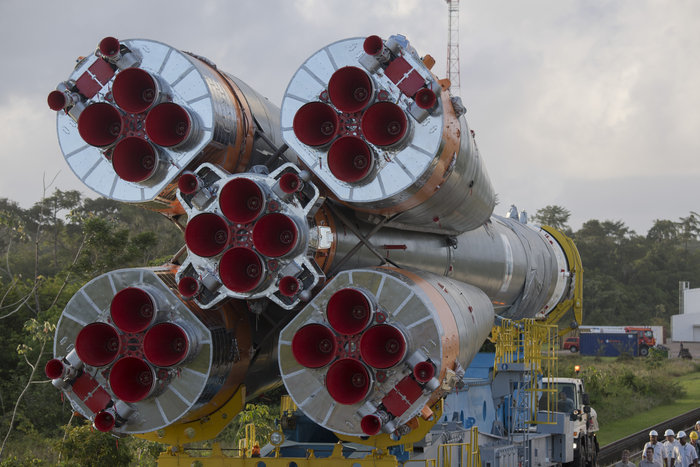
A Russian-built Soyuz rocket moved to its launch pad on the northeastern coast of South America on Tuesday ahead of a Friday night flight with a Spanish-owned communications satellite to relay video and broadband signals between the Americas and Europe.
The three-stage Soyuz-2.1b rocket rolled out of its integration building at the Guiana Space Center — known by the Russian acronym MIK — Tuesday morning for the 2,300-foot (700-meter) journey to the launch pad. After passing through the pad’s mobile service gantry, the rocket was erected vertical and the moveable structure surrounded the booster to give workers access for final launch preparations.
The Hispasat 36W-1 communications craft, already fueled and closed up inside the Soyuz rocket’s payload fairing, arrived at the launch pad later Tuesday for attachment atop the vehicle. The payload composite also includes the Fregat upper stage needed to send the satellite into its intended orbit.
With a launch weight of about 7,100 pounds (3,220 kilograms) the Hispasat 36W-1 spacecraft is the first of a new type of satellite design made by OHB System AG and funded by the European Space Agency.
The satellite also will test out a new digital processor and antenna design developed by Spanish industry.

The “SmallGEO” program managed by ESA, with technical development led by OHB, is a public-private partnership intended to give European industry a new spacecraft product offering, making the continent more competitive in building medium-class satellites.
Madrid-based Hispasat signed on to the program to purchase the first SmallGEO spacecraft for a 15-year mission providing cellular backhaul, video, broadband and data network services over Europe, the Canary Islands and South America.
The launch is scheduled for 0103:34 GMT Saturday (8:03:34 p.m. EST; 10:03:34 p.m. French Guiana time Friday), one of two instantaneous launch opportunities available each day. If a problem prevents launch at that time, another preset launch opportunity is available at 0136:34 GMT (8:36:34 p.m. EST; 10:36:34 p.m. French Guiana time).
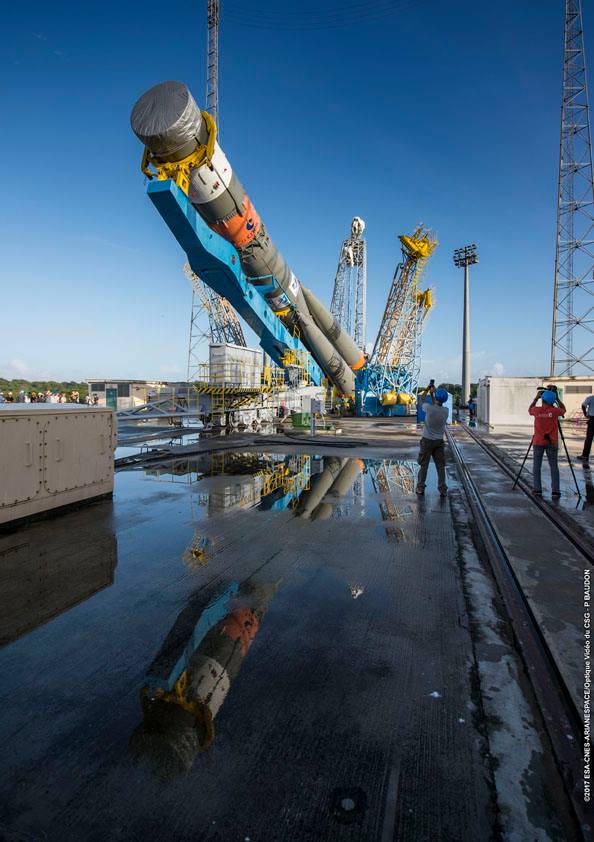
Friday night’s mission will be the 16th time a Soyuz rocket has lifted off from French Guiana since the venerable Russian launcher entered service there for Arianespace in October 2011. It will be the first time a Soyuz rocket launch from the tropical Guiana Space Center has gone into geostationary transfer orbit, the favored target for large telecommunications satellites.
Arianespace’s larger Ariane 5 rocket takes in most of the launch provider’s geostationary satellite business, but officials agreed to launch Hispasat 36W-1 on the smaller Soyuz to avoid delays in finding a slot later this year on the Ariane 5’s busy manifest.
Another geostationary communications satellite, SES 15, will launch on another Soyuz mission from French Guiana in early April.
More images of Tuesday morning’s rollout are posted below.
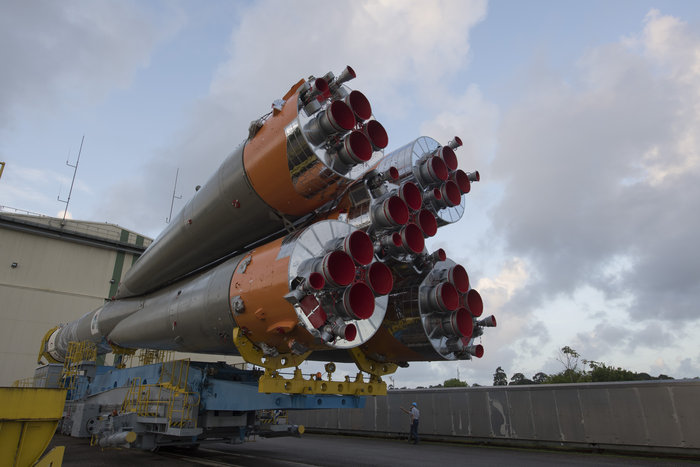
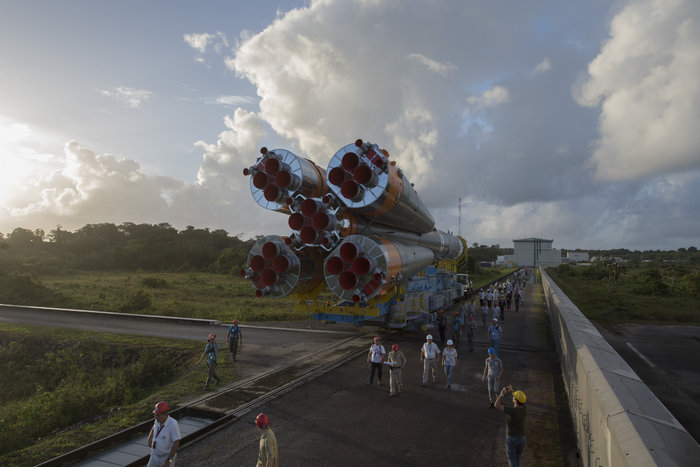
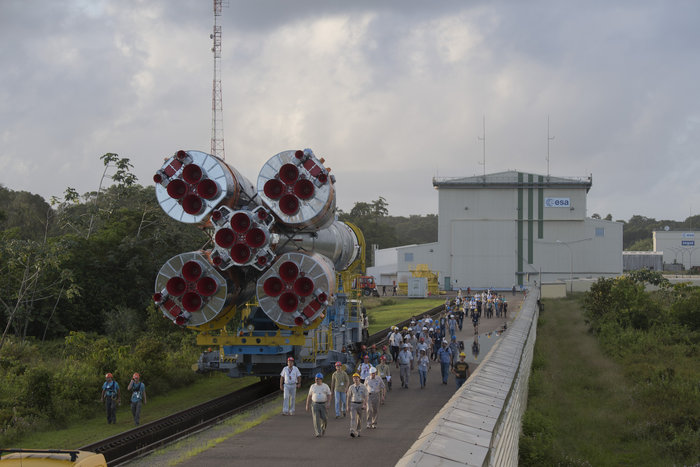
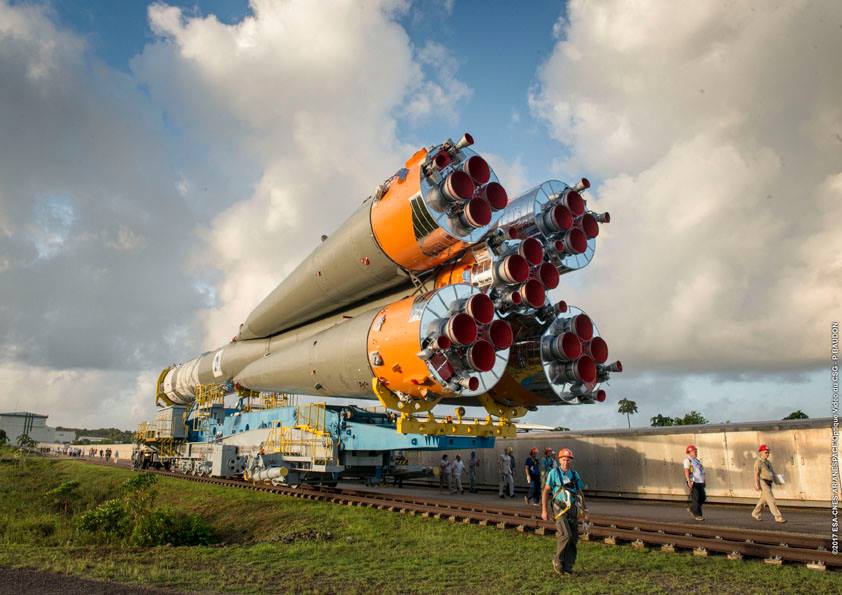

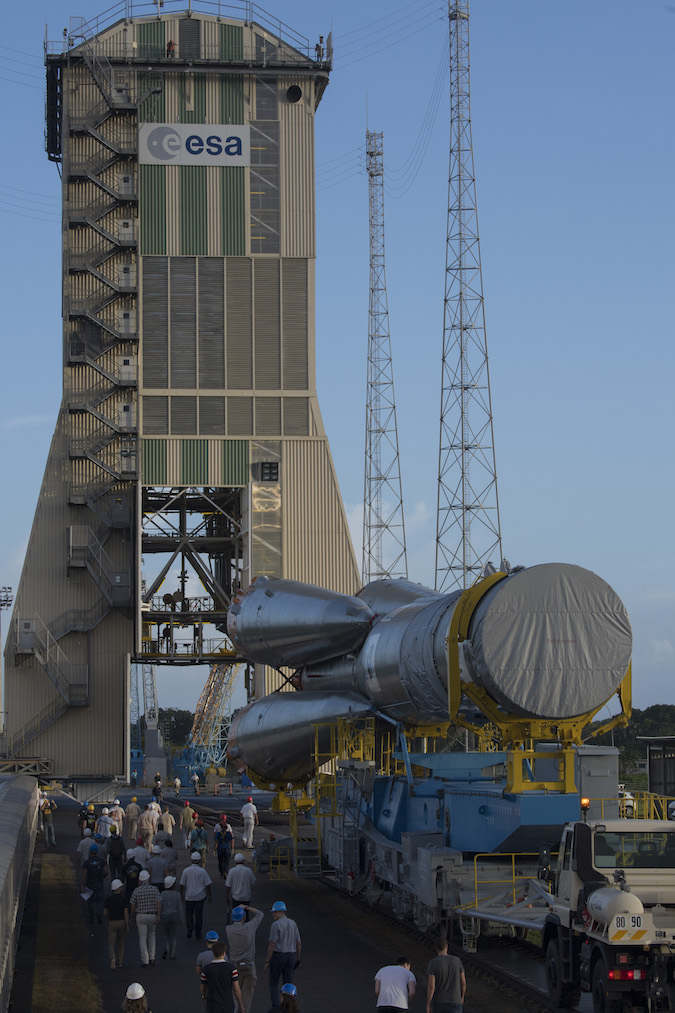
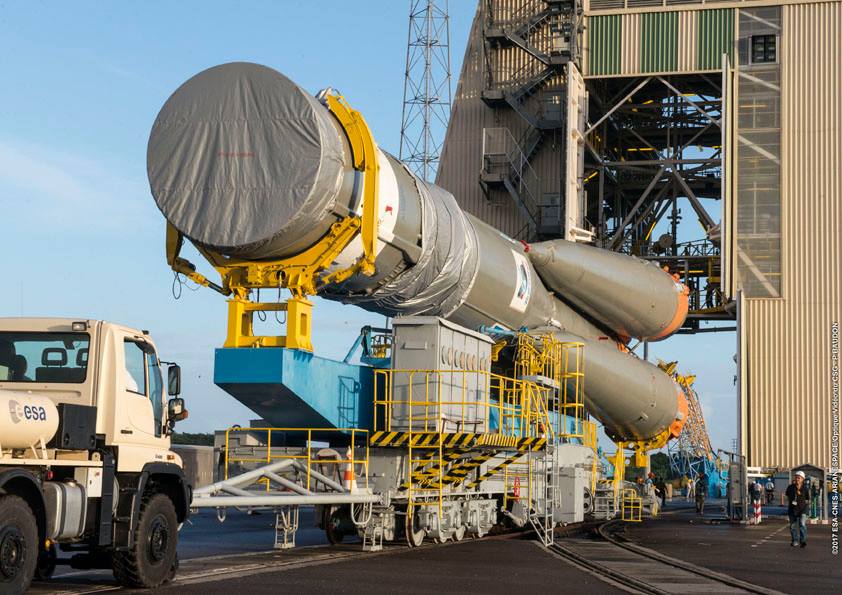
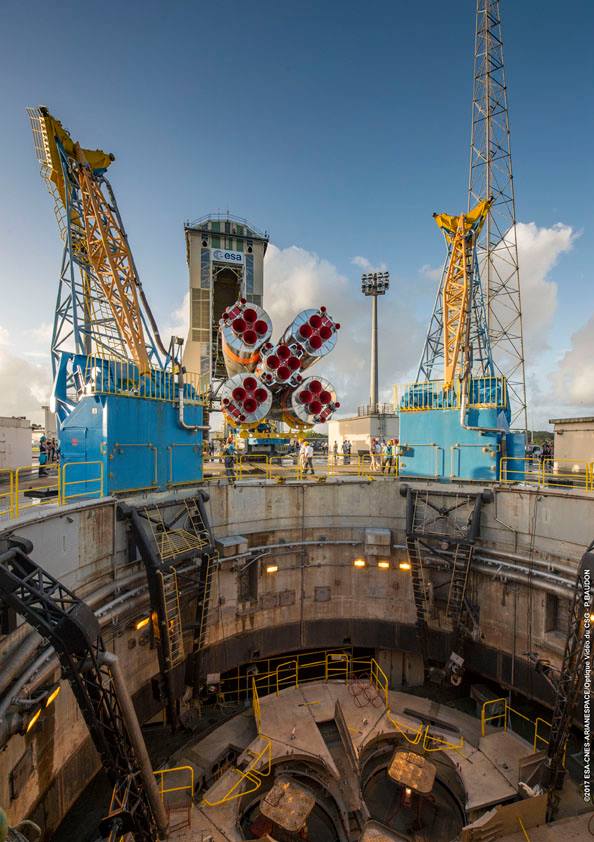
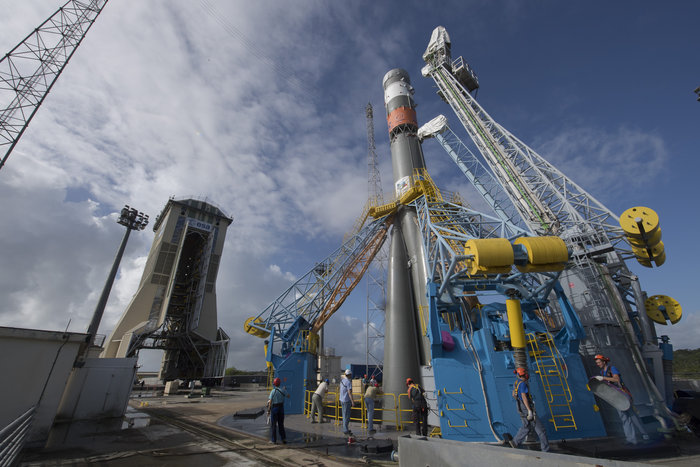
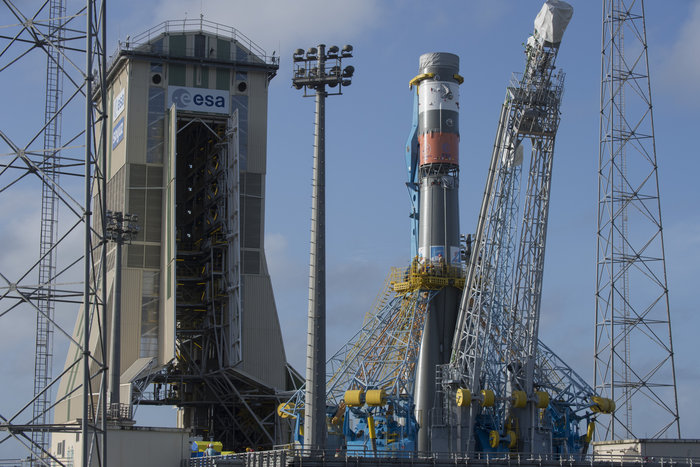

Quelle: SN
---
The Soyuz launcher for Arianespace’s year-opening mission rolled out to the launch pad in French Guiana today, readying the vehicle to receive its Hispasat 36W-1 payload for a nighttime liftoff from the Spaceport on January 27.
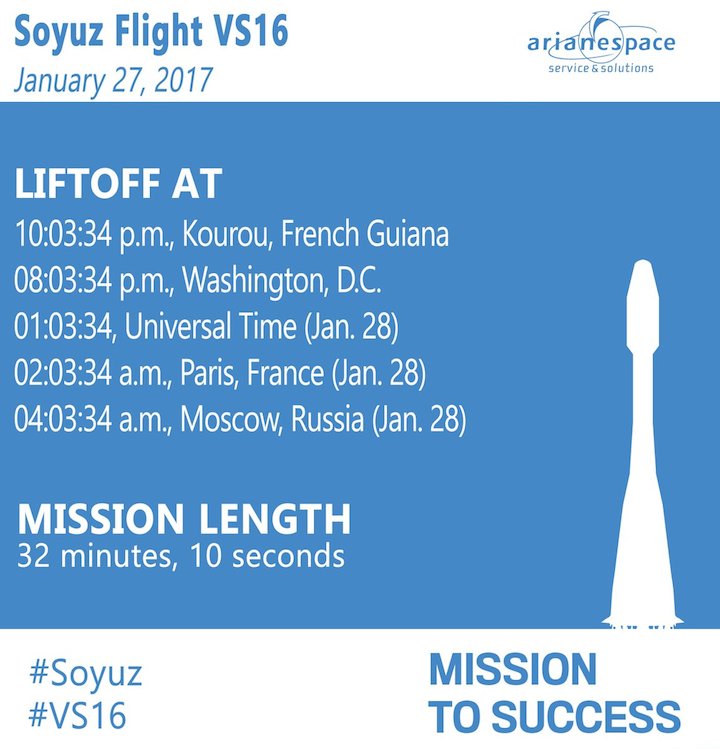
Quelle: arianespace
-
Update: 26.01.2017
.
ARIANESPACE FLIGHT VS16: Hispasat 36W-1
The Launch Readiness Review (RAL) took place in Kourou on Thursday, January 26, 2017 and authorized count-down operations for the Hispasat 36W-1
For its year-opening launch of 2017, Arianespace will orbit the Hispasat 36W-1 geostationary satellite for the Spanish operator Hispasat using a Soyuz launch vehicle.
Designated Flight VS16 in Arianespace’s launcher family numbering system, this mission will be the first-ever mission to geostationary transfer orbit performed by Soyuz from the Guiana Space Center in French Guiana.
Hispasat 36W-1 is the first satellite to be built using Europe’s new “SmallGEO” platform developed by OHB System AG (Germany) under ESA’s ARTES (Advanced Research in Telecommunications Systems) program.
The liftoff will be from the Soyuz Launch Complex (ELS) in Sinnamary, French Guiana (South America).
 |
Liftoff is scheduled for Friday, January 27, 2017 at exactly: |
Quelle: arianespace
-
Update: 27.01.2017
.
Hispasat 36W-1 is integrated on Soyuz for Friday’s medium-lift Arianespace mission from the Spaceport
The Soyuz for Arianespace’s first mission of 2017 from the Spaceport in French Guiana is now complete, following its “topping off” with the Hispasat 36W-1 telecommunications satellite.

The Hispasat 36W-1 satellite, encapsulated in Soyuz’ ST-type payload fairing along with the Fregat upper stage, arrives on the launch pad (photo, left) and is hoisted inside the mobile gantry for installation atop the launch vehicle (photo at right).
Integration of Hispasat 36W-1 occurred in the mobile gantry on the Spaceport’s ELS launch pad, with this three-metric-ton-category relay platform encapsulated in Soyuz’ ST-type payload fairing along with the Fregat upper stage.
All is now ready for the final checkout and tomorrow’s Launch Readiness Review, which will clear the way for a January 27 nighttime departure of the medium-lift mission, designated Flight VS16 in Arianespace’s launcher family numbering system.
Soyuz’ first Spaceport mission to GTO
Hispasat 36W-1 is the initial telecommunications satellite to use a SmallGEO series platform, developed under the European Space Agency’s (ESA) Advanced Research in Telecommunications Systems (ARTES) program. It was designed and manufactured by Germany’s OHB System AG.
After reaching the 36 deg. West orbital position, Hispasat 36W-1 is to be operated by Hispasat – a world leader in Spanish and Portuguese broadcasting, providing relay coverage and multimedia services for continental Europe, the Canary Islands and South America.
Flight VS16 will be the 16th liftoff of a Soyuz since its 2011 introduction at the Spaceport, and marks launcher’s first mission to geostationary transfer orbit (GTO) from French Guiana.
The mission’s nominal duration is 32 minutes, 10 seconds, with the liftoff set at exactly:
– 22:03:34, local time in French Guiana on January 27,
– 01:03:34, Universal Time (UTC) on January 28,
– 02:03:34, in Paris on January 28.
---
Soyuz is “GO” for Arianespace’s first launch of 2017
Arianespace’s year-opening mission has been approved for liftoff tomorrow night from the Spaceport in French Guiana, using a Soyuz to place the Hispasat 36W-1 telecommunications relay platform into geostationary transfer orbit (GTO).

The authorization for this mission, designated Flight VS16 in Arianespace’s numbering system, was given today following the Launch Readiness Review, which validated the “go” status of Soyuz and its three-metric-ton-category satellite passenger, along with the Spaceport’s infrastructure and network of ground-based tracking stations.
This will be the first of up to 12 missions planned in 2017 by Arianespace, utilizing its medium-lift Soyuz, heavy-lift Ariane 5 and lightweight Vega launchers.
Underscoring Arianespace’s reactivity, the launch services provider is planning six of its 2017 missions during a three-month timeframe from tomorrow’s liftoff of Flight VS16 through the second half of April.
A new Soyuz launch profile from Sinnamary
Flight VS16’s 32-minute mission profile with Hispasat 36W-1 will mark the first use of Soyuz from French Guiana in a GTO payload deployment from French Guiana.
The fully-assembled Soyuz for tomorrow’s mission is on the ELS launch pad, located in the Spaceport’s northwestern sector within the commune of Sinnamary. It is protected by a 53-meter-tall mobile gantry, which will be rolled back at 1 hour, 10 minutes prior to liftoff.
Hispasat 36W-1 is the initial telecommunications satellite built with a SmallGEO series spacecraft platform, developed under the European Space Agency’s (ESA) Advanced Research in Telecommunications Systems (ARTES) program. The satellite was designed and manufactured by Germany’s OHB System AG.
-
Update: 21.23 MEZ
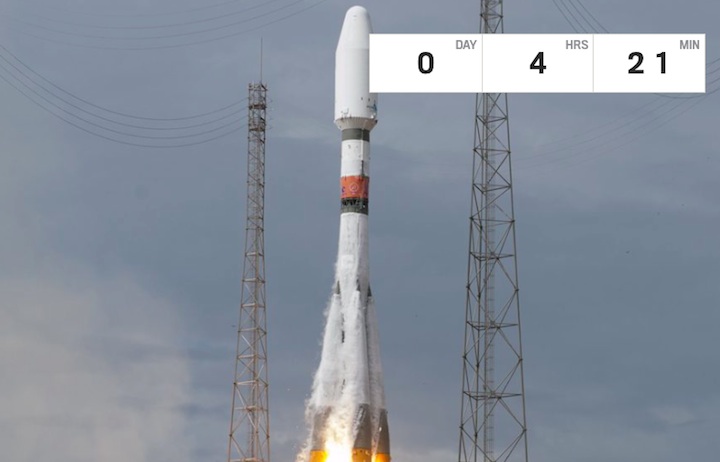
...
Update: 28.01.2017
Frams von Soyuz-VS16 Start:
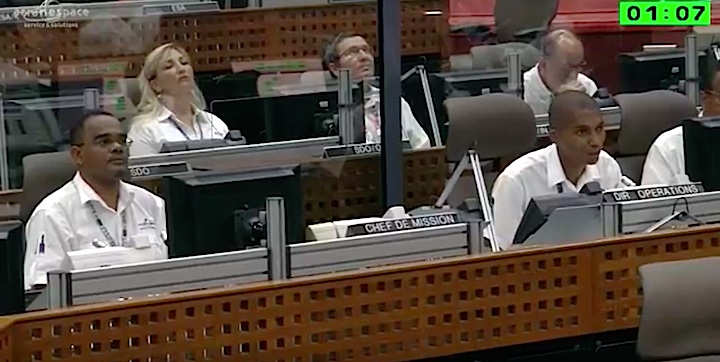






























Quelle: arianespace

